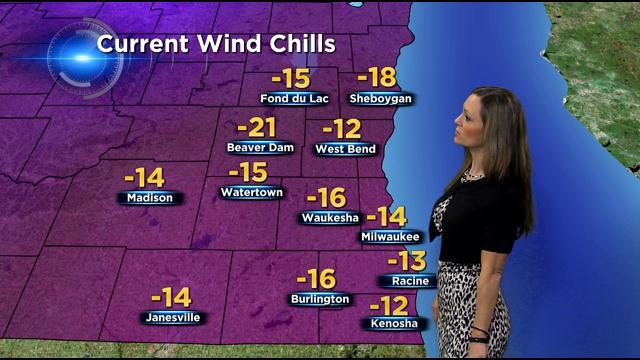Winter Weather Terms

Today is the last day of Winter Weather Awareness week in Wisconsin. As you know, we experience many types of weather conditions during the winter months. Are you familiar with winter weather terms? Do you know the difference between a watch and a warning? It's important to learn and understand the definitions of different winter related headlines. Here are the main products issued by the National Weather Service to keep people informed and safe during the winter season.
Winter Storm Watch
A Winter Storm Watch is issued when there is a potential for a winter storm to affect the region during the next one to three days. It does not always mean the area will be hit by a winter storm, as there is still some uncertainty of the exact path or timing of the event. This is a planning stage--use this time to ensure you have supplies at home, like some extra food, medications, baby items, etc. If travel is planned, check ahead and see if a different route or delaying your departure may make your trip safer. Be alert for changing weather conditions.
Winter Weather Advisory
Advisories are issued for those winter weather events that are expected to be more of an inconvenience and should not become life-threatening if caution is exercised. These are often issued for 3 to 5 inches of snow, blowing and drifting snow, freezing drizzle, or a combination of these elements. It may be issued for less snow for early season events, when drivers may not be accustomed to slick roads.
Winter Storm Warning
Winter Storm Warnings are usually issued when dangerous winter weather is expected, occurring, or imminent. The weather can become life-threatening. Criteria includes snowfalls of 6 inches or more in 12 hours, 8 inches in 24 hours, or lower amounts if accompanied by strong winds or a combination of dangerous winter elements. Avoid unnecessary travel.
Blizzard Warnings
The most dangerous winter event is certainly the blizzard. Blizzard Warnings are issued when snow or blowing snow lowers visibilities to a 1/4 mile or less, wind gusts hit 35 mph or higher, and the storm lasts for 3 hours or more. Travel is dangerous and should be avoided if possible.
Ice Storm Warning
Ice storm Warnings are issued when freezing rain will cause widespread glazing. A coating of ice is expected to reach 1/4 inch thick or more on objects and make travel nearly impossible. For lesser amounts of ice, a Freezing Rain Advisory would be used, but even a thin glaze of ice can make travel difficult. Avoid travel.
Wind Chill Warning
Issued when wind chills of -35 F or lower are expected. A Wind Chill Advisory is issued for values of -20 F or lower. Dress warmly and cover as much exposed skin as possible.
Here are other useful link on winter weather:
http://www.weather.gov/mkx/winter-wx-awareness
I'm meteorologist Rebecca Schuld
